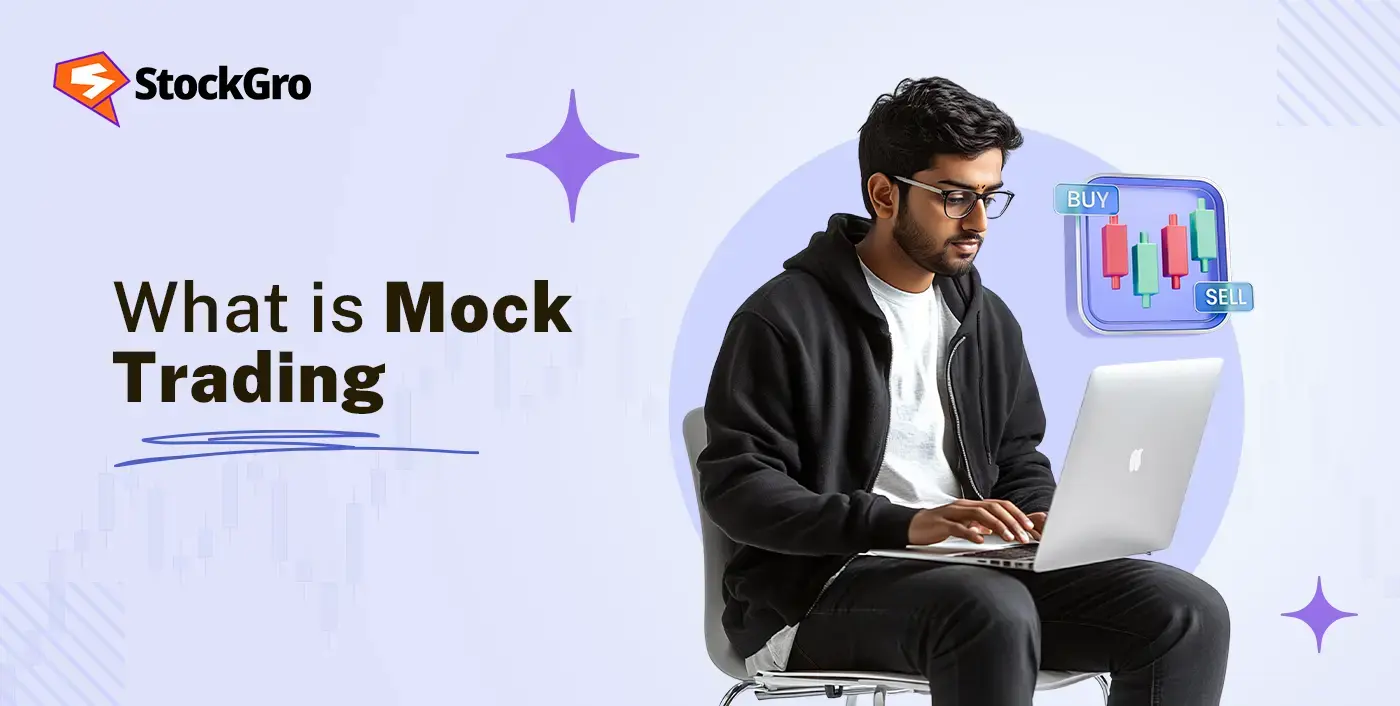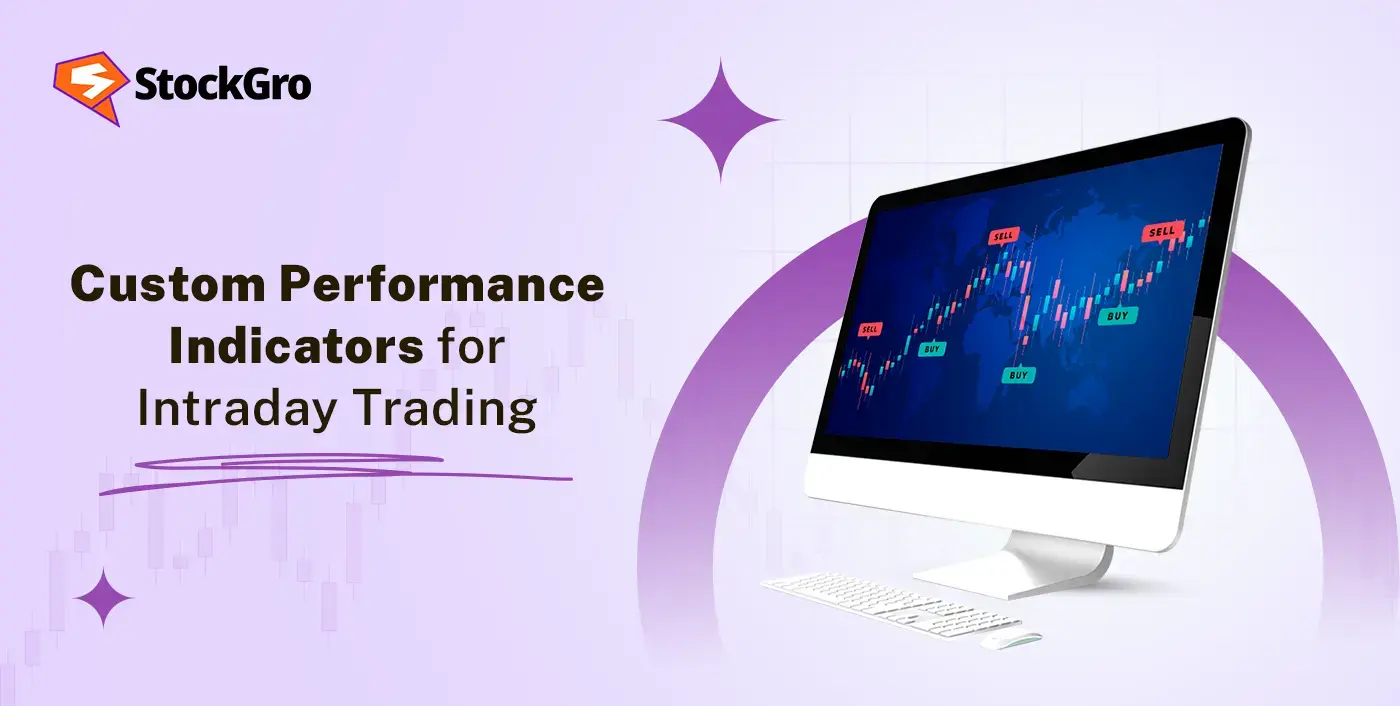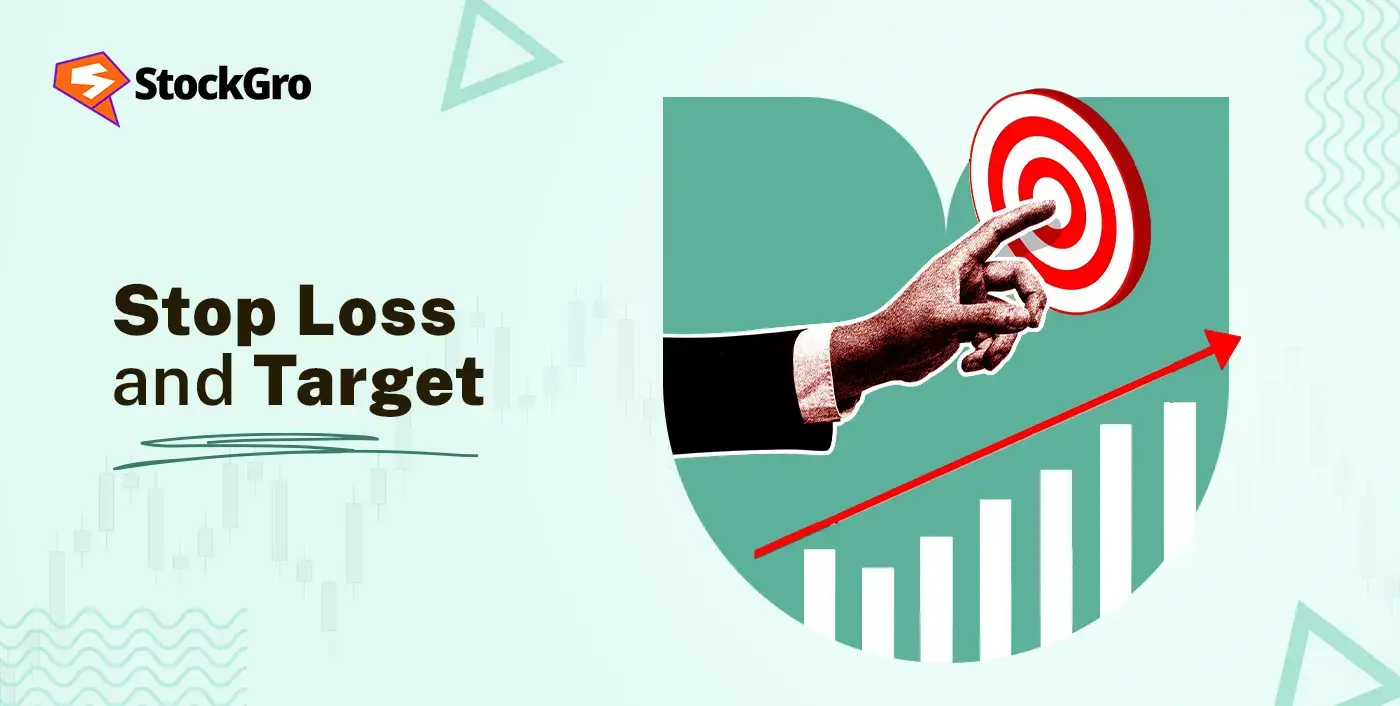
For those new to the stock market, understanding how it works can take time. Mock trading offers a way to explore this space in a risk-free setup. In a country like India, where financial awareness is still growing, such tools have become more common. In fact, as per the National Centre for Financial Education, only 27% of Indian adults were financially literate in 2025. In fact, as per the National Centre for Financial Education, only 27% of Indian adults were financially literate in 2025. With such a large gap in financial understanding, mock trading becomes a useful starting point. In this blog, we’ll look at what is mock trading, how it works, and more.
What is Mock Trading?
Mock trading also known as paper trading or virtual trading is a way to practice trading in a real-time market environment without using real money. It lets users place simulated buy and sell orders using virtual funds. This helps understand market behavior and trading platforms without any financial risk.
Purpose of Mock Trading
Mock trading plays an important role for both the exchanges and the people who trade. It helps make sure everything works smoothly before the real action begins.
- Stock exchanges and brokers use mock sessions to test new software, technology upgrades, and safety systems. This ensures potential problems are spotted and fixed well before the actual rollout.
- For beginners and experienced traders alike, it’s a chance to practice trading in a real-time setting without any financial risk. It prepares users to stay updated and adapt quickly to system updates or regulatory shifts.
- Mock trading helps check how well systems perform during busy or unstable market conditions. This ensures the systems don’t fail when trading volumes are high.
- These test environments also help confirm that brokers and trading systems follow the latest rules set by market regulators.
Mock trading, though not part of actual trading hours, plays a key role in keeping the market safe, stable, and prepared.
How Mock Trading Works
These platforms function like real trading systems but use virtual money. Here’s how they work:
- Virtual capital: Accounts are funded with a fixed amount of virtual money for trading.
- Investment options: Users get the chance to try their hand at different assets, including stocks, ETFs, and more.
- Real-time data: Live market prices and trends make the experience realistic.
- Strategy testing: Different trading strategies can be tried and refined in a risk-free setting.
- Performance analytics: Platforms provide reports to track trade outcomes and overall performance.
- No financial risk: Since real money isn’t used, users can experiment freely and learn from outcomes.
This setup helps users build familiarity with market dynamics through hands-on practice.
Makes Mock Stock Trading Valuable for Beginners?
Mock stock trading gives beginners a safe space to learn and practice before entering real markets setups in the following ways:
- Learn without risk: Get an understanding of how to buy, sell, and track stocks without any financial risk, making it ideal for first-time investors.
- Get used to real markets:Simulates real-time price movements, helping users prepare for unpredictable market conditions, especially in intraday trading.
- Build confidence: Builds trust in your decision-making as you see how your virtual trades perform over time.
- Practice for free: Allows unlimited practice without spending a single rupee, making it accessible to everyone.
- Try different strategies: Dive into in-depth trading insights to identify strengths and pinpoint areas that need attention.
- Track your progress: Make errors, learn from them, and sharpen your skills, all with zero financial loss.
Steps to Begin Your Mock Stock Trading Experience
Mock stock trading allows users to explore market processes in a simulated setting. The steps below outline how the experience typically begins:
- Select a suitable platform
Start by choosing a mock trading platform or app that provides real-time market data and a clear, easy-to-navigate interface. This can help ensure smoother interaction with the system during the learning process.
- Setup account
Create an account on the selected platform. Once registered, virtual funds are usually allocated automatically. These enable users to carry out simulated trades and track outcomes over time.
- Commence trading activity
Begin trading by using the virtual funds to place buy and sell orders. Various strategies such as long-term positions or intraday trading can be checked out, depending on the platform’s features. Observing the results of each trade may offer insights into different market behaviors.
- Evaluate and adapt
Regularly review completed trades and the strategies used. Identifying which approaches align with intended outcomes can support further experimentation and refinement within the mock trading setup.
Limitations of Mock Trading
Mock trading can be useful for practice, but it has a few important limitations to keep in mind:
- No real emotions: Since no real money is involved, it doesn’t reflect the emotional pressure of actual trading, especially during fast-paced intraday trading.
- No real consequences: Without the risk of loss, traders may make decisions they wouldn’t make with real money.
- Different execution experience: Trades in a mock environment might not face the same delays or slippage as real markets.
- No market impact: Simulated trades don’t affect prices, unlike large orders in live trading.
- Possible data delays: Some platforms may have slightly delayed or less accurate data, which can affect how realistic the experience feels.
Mock Trading vs Real Trading: The Difference
Mock trading and live trading may appear similar but differ in major aspects. The table below shows how:
| Aspect | Mock Trading | Live Trading |
| Risk | No financial risk (no real money involved). | Real money is used, involving financial risk. |
| Emotions | Decisions are not influenced by fear or greed. | Emotional reactions can strongly affect decisions. |
| Real Costs | Does not include brokerage, taxes, or slippage. | Includes all actual costs, which impact profits. |
| Learning Focus | Useful for testing strategies and learning platforms. | Helps build experience under market pressure and live decision-making. |
In short, mock trading provides a safe environment to practice strategies and understand market tools. Live trading, especially in areas like intraday trading, brings in emotional and financial challenges that only real exposure can reveal.
Popular Mock Trading Platforms
Here are the platforms where mock trading is commonly available:
- Stock exchanges
NSE and BSE conduct official mock trading sessions to test systems and ensure operational readiness. These sessions closely simulate live market conditions across equity and derivatives segments but are typically limited to brokers and trading members.
- Brokerage platforms
Various online brokers and trading apps offer mock trading with virtual funds and live or delayed market data, allowing individual users to practice freely.
- Educational simulators
Financial learning platforms provide simulated accounts for stocks, derivatives, and currencies, offering a safe environment to understand market functioning.
Tips for Effective Mock Trading
To get the most value from mock trading, it’s important to treat it seriously and follow a structured approach:
- Maintain a record of all trades and review outcomes periodically to observe patterns in performance.
- Test strategies across different market phases (like bull or bear periods) to understand how they might behave under varied conditions.
- Use live market data with current prices to align simulated decisions with actual market trends.
- Select a simulation platform that reflects your trading style and includes tools you expect to use in real-market situations.
- Repeating mock trading over time may help build familiarity with new or evolving strategies, especially before transitioning to actual trades.
Conclusion
Mock trading enables users to comprehend how markets and trading platforms function through simulated activity. It helps in building familiarity with orders, price movements, and strategy testing. For those still asking what is mock trading, it’s a method to practise and observe trading behaviour without participating in live transactions or financial outcomes.
FAQs
Yes, mock trading is generally free on multiple platforms. Both NSE and BSE conduct official free mock trading sessions for registered trading members and brokers, allowing them to practice and test order executions without real money. Besides these exchange sessions, many independent trading platforms and apps also offer free virtual trading environments with features like real-time market data and virtual funds, enabling users to practice strategies risk-free without any charges.
No, mock trading does not provide real profits. All trades are executed with virtual or fake money, so any gains made during practice do not result in actual earnings or withdrawable funds. The purpose of these simulators is educational to help traders practice and refine strategies without risking real capital. While you can experience gains and losses and learn important market mechanics, there is no direct monetary benefit from the activity itself.
There is no universally prescribed duration for mock trading, as it depends largely on personal progress and confidence. Traders are encouraged to continue mock trading until they consistently achieve their performance goals and feel comfortable with their understanding of the market, their strategies, and risk management. Some experts suggest completing at least 100 practice trades or sustaining profitability over a set period before transitioning to live trading. Ultimately, the emphasis remains on skill development, not a fixed timeframe.
Mock trading for crypto and forex is not provided by NSE or BSE, which focus on Indian equities and related derivatives. However, many private trading platforms and simulators offer mock trading for cryptocurrencies and foreign exchange markets. These third-party tools allow users to practice crypto and forex trading with virtual funds in realistic market environments, making it possible to gain experience in these asset classes without risking real money.
Beginners can access mock trading through the official NSE and BSE sessions, which are useful for understanding live market flows in Indian equities and derivatives. Besides these, a variety of independent trading apps and virtual trading platforms offer beginner-friendly interfaces combined with real-time market data and educational tools. These platforms simulate NSE and BSE trading environments and often cover multiple asset classes, facilitating risk-free learning and strategy testing.

